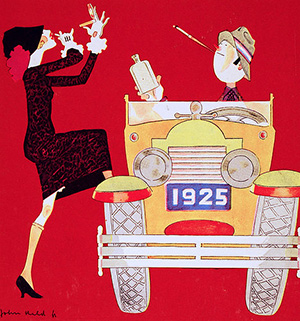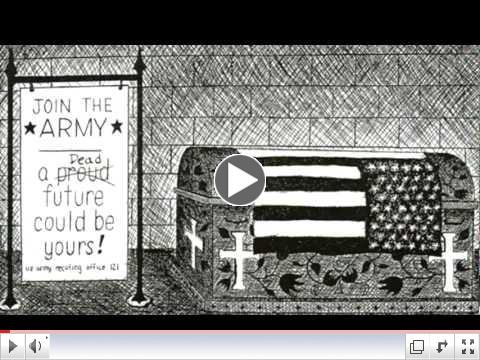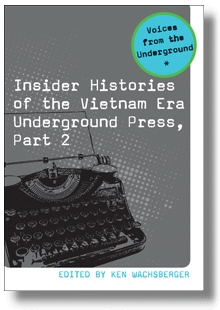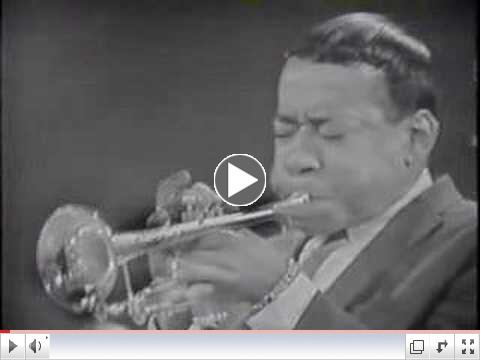Visit Our New 'Online University of the Left' and Be Amazed!

Check out the various departments, study guides and archives
|
Dialogue & Initiative 2012 The new annual edition of our journal of discussion and analysis is now out. More than 130 pages, it includes 13 articles related to the Occupy! movement, as well as seven others vital to study in this election year. Cost is $10 plus shipping. Or get one by becoming a new member or sustainer. Click the title to buy it directly.
|
Blog of the Week:  Save the Workers, Save the Planet!
|
Lost Writings of SDS..
Revolutionary Youth the the New Working Class: The Praxis Papers, the Port Authority Statement, the RYM Documents and other Lost Writings of SDS
Edited by Carl Davidson 
Changemaker, 273pp, $22.50
For the full contents, click the link and view 'Preview' under the cover graphic.
|

By Martin Ford CreateSpace
Automation, Accelerating Technology and the Economy of the Future
|
|
By Randy Shannon, CCDS

"Everyone has the right to work, to free of employment, to just and favorable conditions of work and to protection against unemployment."
- United Nations Universal Declaration of Human Rights, December 10, 1948
I. Introduction
The "Great Recession" that began in 2007 has caused the greatest percent of job losses since the Great Depression of 1929. This crisis is the end of an era of unrestrained 'neo-liberal' capitalism that became public policy during the Reagan administration. The crisis marks a new level of instability with the growth of a global financial elite that targeted US workers and our trade unions after World War II.
|
|
Order Our
Full Employment Booklets
 |
...In a new and updated 2nd Edition
Capitalism may well collapse under its own excesses, but what would one propose to replace it? Margaret Thatcher's mantra was TINA...There Is No Alternative. David Schweickart's vision of "Economic Democracy" proposes a serious alternative. Even more fundamentally, it opens the door to thinking about alternatives. His may or may not turn out to be the definitive "successor system," but he is a leader in breaking out of the box. |
|
Quick Links...
CCDS Discussion |
Sex and the Automobile in the Jazz Age

By Peter Ling in History Today: 'Brothels on wheels' thundered the moralists but Peter Ling argues the advent of mass motoring in the 1920s was only one of the changes in social and group relationships that made easier the pursuit of carnal desire.
|
 A Memoir of the 1960s by Paul KrehbielAutumn Leaf Press, $25.64 A Memoir of the 1960s by Paul KrehbielAutumn Leaf Press, $25.64 | | Shades of Justice Video: Bringing Down a President, Ending a War |
|
Carl Davidson's Latest Book:
New Paths to Socialism

Essays on Mondragon, Marx, Gramsci and the Green and Solidarity Economies |
Solidarity Economy:What It's All About

Edited by Jenna Allard, Carl Davidson and Julie Matthaei
Buy it here...
|

Voices from the Underground Press of the 1960s, Part 2- Foreword by Susan Brownmiller
- Preface by Ken Wachsberger
$37.50 + $6 shipping
|
|
|
|
An Invitation to CCDSers and Friends...
 Trapped in a Minefield of Racism & War Danger
Most of all, it's urgent that you oppose austerity, make solidarity with the Occupy! movement and end the wars! We're doing more than ever, and have big plans. So pay your dues, make a donation and become a sustainer. Do it Now! Check the link at the bottom...
|

By Adele M. Stan
Alternet.org
July 22, 2012 - The Romney campaign got the memo: Race-baiting and xenophobia work -- at least among the segment of the electorate former Massachusetts governor Mitt Romney hopes to capture in his quest for the presidency.
Over the course of the last two weeks, Romney's strategy has incorporated racial and cultural cues, both subtle and blatant, as a means of deflection from the Obama campaign's relentless offensive based on questions about Romney's tenure at Bain Capital, from which Romney claims to have been retired during a period of time, 1999-2002, in which his name is listed on documents filed with the Securities and Exchange Commission as the sole owner and chief executive officer of the firm.
Add those questions -- what was Bain doing at that time, and why does Romney want deniability for those actions? -- to Romney's refusal to release more than his last two years of tax returns, and you've got a pretty shady-looking candidate.
Furthermore, Romney, an elite member of the Church of Jesus Christ of Latter Day Saints, has suffered difficulties from the start among elements of the Republican base, especially right-wing Christian evangelicals, who view Mormonism as a cult and doubt Romney's conservative bona fides, especially on abortion, given the fact that he was, at one time, pro-choice.
Race trumps religion
Searching for a theme that would unify the base of the Republican Party, the Romney camp sought to find its footing in voter sentiment verified this week in a Washington Post/ABC News poll: Race-based reservations about Obama trump religion-based reservations about Romney. (It's not unlikely that the Romney campaign's internal polling revealed much the same information.) In short, the theme boiled down to this: remind those core voters that the stakes in this election include another four years with a black guy in the White House -- and you know what those people are like.
The poll, conducted by Langer Research, found that among the non-black adults it surveyed, 62 percent "think blacks in their community don't experience racial discrimination (a view at odds with what most blacks themselves report)," according to Langer's release .
When the registered voters in that group of people who think African-Americans have an equal shot at success, at least in the respondents' hometowns, 59 percent expressed a preference for Romney in the presidential race. Move the needle up a couple of points on that number, and Romney could have a winning margin.
Meanwhile, non-black registered voters who think blacks do experience discrimination in the respondents' own communities were far more likely to name Obama as their candidate, 56-37 percent.
While the same survey reveals some discomfort in the electorate with Romney's faith, it's a less influential factor in most voters' decision-making than race, according to the ABC News poll. From the Langer Research release [3] (PDF):
Thirty-one percent of non-Mormon Americans express an unfavorable view of Mormonism, while 38 percent see it favorably (the rest have no opinion). Romney has 54 percent support among registered voters in the positive group, vs. 42 percent among those who see Mormonism negatively, a 12-point gap.
Casting Obama as "Other"
Among Christian evangelicals, however, the discomfort with Mormonism is more pronounced, with only 62 percent of that population saying they'd be comfortable with a close relative marrying a Mormon, compared with 78 percent of other adults. But the poll showed that racial attitudes play a stronger role in determining a voter's preferred candidate....(Click title for more)
|
|
 The principal Obama Administration target in this complex affair is Iran, not Syria. The Syrian government must fall because it is Iran's main Arab ally. The principal Obama Administration target in this complex affair is Iran, not Syria. The Syrian government must fall because it is Iran's main Arab ally.
By Jack A. Smith
The Rag Blog
July 26, 2012 - After several months of talking diplomacy while simultaneously strengthening rebel forces in Syria and demonizing the Damascus government, the Obama Administration has openly decided to go for the kill. Violent regime change will not happen immediately, but it is obviously President Obama's goal.
The White House is now "redoubling efforts to rally a coalition of like-minded countries to forcibly bring down the government of President Assad al-Assad," The New York Times reported July 21. "Administration officials have been in talks with officials in Turkey and Israel over how to manage a Syrian government collapse."
McClatchy Newspapers stated July 23 that,
"Despite reports last week that suggested rebel forces were on the verge of major triumphs in Syria, the last few days of fighting there show that a long battle still looms. Forces loyal to Assad in recent days have tightened their grip on the Lebanese border, re-established control over at least one neighborhood in Damascus and perhaps reached an accommodation with the country's Kurds that will free up more troops for battle."
According to the U.S. and its NATO allies, the Damascus regime is engaging in a one-sided, murderous war against its own people, who simply seek democracy. At the same time, the Tehran government is characterized as a "terrorist" regime intent upon building and using nuclear weapons in order to destroy Israel and rule the Middle East. The U.S. news media, as expected, propagates without question Washington's campaign against Syria and Iran.
The United States suggests that its principal reason for seeking regime change in Syria is to promote "democracy" -- a tarnished rationale often employed in recent decades to undermine or destroy governments that displease the U.S. superpower, such as in Iran in the 1950s, the Dominican Republic in the 1960s, Chile in the 1970s, Nicaragua in the 1980s, Yugoslavia in the 1990s, Iraq in the 2000s, and Libya in the 2010s, among other instances.
Democracy has nothing to do with Washington's objectives in Syria. America's closest regional ally in the anti-Assad endeavor is the repressive anti-democratic monarchy of Saudi Arabia, which finances and arms the rebel opposition in Syria along with resource-rich Qatar. Both Arab countries played a similar role last year in the U.S./NATO overthrow of the Gaddafi government in Libya.
Having learned a bitter lesson after agreeing to support a no-fly zone in Libya -- and seeing that mandate illegally expanded by U.S.-NATO forces in order to wage a vicious war for regime change -- both Russia and China have three times exercised their right to veto U.S. measures in the UN to escalate the conflict in Syria. The Security Council approved a 30-day extension of the UN monitor mission July 20, but Susan Rice, Washington's ambassador to the world body, implied it may be the last continuation.
Both Moscow and Beijing seek to bring about a negotiated solution to the crisis based on a cease-fire, talks and reforms. According to Russian UN Ambassador Vitaly Churkin, "the only way to put an end to this tragic conflict is to get to the negotiating table." The Syrian government agrees, but the opposition forces -- aware that Washington and its allies seek a swift regime change -- reject negotiations....(Click title for more)
|

By John Farmer
he Star-Ledger / New Jersey
July 22, 2012
This is the story of a dinner party.
It occurred in a suburban middle-class community - maybe slightly upscale middle class, but not much - just outside one of our big cities. Pretty typical place.
The guests all knew each other. They were neighbors or friends or acquaintances who'd been to these parties many times. They were white, every one, mostly businessmen and their wives, and some engineers who work or once worked in the nearby defense industries.
The postdinner conversation was the usual stuff - who's moving in, who's moving out. Anybody heard from Ralph since he moved to Wisconsin? Nobody had. No surprise. Ralph wouldn't tell you if your coat was on fire.
It was about at that point, as the conversation edged warily toward the touchy subject of politics, that one fellow - a bit of a curmudgeon - asked if anybody thought President Obama had not been born in America.
You could have heard a cocktail napkin drop.
For a moment, no one said a thing. People looked at one another. Then a lady who had moved to the area from Virginia raised her hand. "I do," she said. One by one other hands were raised until it was clear most of guests thought Obama had not been born here.
Nobody said anything. Nobody had to. The verdict was clear. But apparently not entirely clear to the questioner. He pressed on. "Does anyone think Obama's a Muslim?" he asked.
By now it was evident the questions made some guests uncomfortable. This guy was casting a pall over our good time. But he wouldn't quit. "Anybody think Obama's a Muslim?" he asked. And again most of those present raised their hands.
The president, they were convinced, or said they were, is indeed a Muslim who was not born in this country.
"How do you know that's true?" our questioner asked. "I mean that he's a Muslim. Where'd you learn that?" Fox News, somebody said. A few others nodded in agreement. "Read it somewhere," another said.
The atmosphere in the room, so genial moments ago, was becoming tense. My guess was that it might be some time before our Grand Inquisitor was invited back. Somebody will change the subject, I thought.
Nobody did. At least not before our inquisitor posed still another question calculated to make the crowd even more uneasy.
"Is anyone here uncomfortable," he asked, "with the fact that the president of the United States is black, that the guy in the Oval Office isn't white?"
I got another drink at this point. Most of my fellow party-goers could have used one, too. There was a lot of looking around at one another. Nobody, it seemed, wanted to tackle that one.
"I am," a young women finally said. And around the room there were nods of silent agreement.
"Racist" is an ugly word and an easy label to attach to someone whose view of others is abhorrent, too easy in fact.
For racism, scholars tell us, can mean different things to different people and spring from widely different origins - upbringing, for example, and parental leanings, early adult lifestyles and peer pressure, whom one knew and whom one never encountered, regional biases, political and economic motives, educational levels.
There's no one-size-fits-all explanation, in short. Two states, West Virginia and Mississippi, underscore the point.
Few states differ so starkly. But one recent study found that West Virginia, with one of the smallest African-American populations in the nation, had the highest index of racism, followed closely by Mississippi, with one of the largest percentages of black citizens. What they have in common, besides a high racism reading, is poverty and low levels of education....(Click title for more)
|
The Empire Comes Home: Bill Moyers and Chris Hedges on US 'Sacrifice Zones' - 10 Minute Video
 | Bill Moyers and Chris Hedges on Capitalism's 'Sacrifice Zones' in Camden, NJ, West Virgina, Florida & South Dakota
|
|

By Chris Hedges
Common Dreams
July 16, 2012 - Joe Sacco and I, one afternoon when we were working in southern West Virginia on our book "Days of Destruction, Days of Revolt," parked our car on the side of a road. We walked with Kenny King into the woods covering the slopes of Blair Mountain. King is leading an effort to halt companies from extracting coal by blasting apart the mountain, the site in the early 1920s of the largest armed insurrection in the United States since the Civil War.
Blair Mountain, amid today's rising corporate exploitation and state repression, represents a piece of American history that corporate capitalists, and especially the coal companies, would have us forget. It is a reminder that citizens have a right to resist a corporate machine intent on subjugating them. It is a reminder that all the openings of our democracy were achieved with the toil, anguish and sometimes blood of radicals and popular fronts, from labor unions to anarchists, socialists and communists. But this is not approved history. We are instructed by the power elite to worship at approved shrines-plantation estates erected for wealthy slaveholders and land speculators such as George Washington, or the gilded domes of authority in the nation's capital.
As we walked, King, a member of the Friends of Blair Mountain, an organization formed to have the site declared a national park, swept a metal detector over the soil. When it went off he knelt. He dug with a trowel until he unearthed a bullet casing, which he handed to me. I recognized it as a .30-30, the kind of ammunition my grandfather and I used when we hunted deer in Maine. Winchester lever-action rifles, which took the .30-30 round, were widely used by the rebellious miners.
In late August and early September 1921 in West Virginia's Logan County as many as 15,000 armed miners, some of them allegedly provided with weapons by the United Mine Workers of America, mounted an insurrection after a series of assassinations of union leaders and their chief supporters, as well as mass evictions, blacklistings and wholesale firings by coal companies determined to break union organizing. Miners in other coal fields across the United States had concluded a strike that lasted two months and ended with a 27 percent pay increase. The miners in West Virginia and eastern Kentucky wanted the same. They wanted to be freed from the debt peonage of the company stores, to be paid fairly for their work, to have better safety in the mines, to fight back against the judges, politicians, journalists and civil authorities who had sold out to Big Coal, and to have a union. They grasped that unchallenged and unregulated corporate power was a form of enslavement. And they grasped that it was only through a union that they had any hope of winning.
Joe and I visited the grave of Sid Hatfield in a hilltop cemetery near the Tug River in Buskirk, Ky. The headstone, which is engraved with an image of Hatfield's face, reads in part: "Defender of the rights of working people, gunned down by Felts detectives on the steps of the McDowell County Courthouse. . ... His murder triggered the miners' rebellion at the Battle of Blair Mountain." Hatfield's brief life is a microcosm of what can happen when one does not sell out to the powerful. The police chief of Matewan, W.Va., he turned down the coal companies' offer of what was then the small fortune of $300 a month to turn against the miners. Law enforcement, with the exception of a few renegades such as Hatfield, was stripped, as is true now in corporate America, of any pretense of impartiality. Miners who wanted jobs had to sign "yaller dog" contracts promising they would not "affiliate with or assist or give aid to any labor organization," under penalty of immediate loss of jobs and company housing. Baldwin-Felts spies, private security goons hired by the mine owners, informed on miners who talked of organizing. This led to dismissal, blacklisting, beating and sometimes death. The coal fields were dominated by company towns. Corporate power had seeped into every facet of existence. And resistance was costly.
"For more than twenty years, coal operators had controlled their very being; had arranged for their homes and towns, churches, schools, and recreation centers; had provided doctors and teachers and preachers; had employed many of their law officers; had even selected silent motion picture shows that were beginning to appear in theaters; had told them, finally, where and how they were to live and discharged those who did not conform," Lon Savage wrote of the coal miners in his book "Thunder in the Mountains." "In this context, the union's organizing campaign gave the miners a new vision: not only better pay and working conditions but independence, power, freedom, justice, and prestige for people who felt they had lost them all."
Denise Giardina, in her lyrical and moving novel of the mine wars, "Storming Heaven," has union organizer Rondal Lloyd wonder what it is that finally makes a passive and cowed population rebel.
"Who can say why the miners were ready to listen to me?" he asks. "They broke their backs and died of roof falls and rib rolls and gas, their children went to bed hungry, and died of the typhoid, their wives took the consumption, they themselves coughed and spit up. True enough. They stayed in debt to the company store, they had no say at the mine or freedom of any kind, they could be let go at a moment's notice and put out in the road, or beaten, or shot. All true. But it had always been that way, and they never fought back. Everything had always been the way it was, we were all pilgrims of sorrow, and only Jesus or the Virgin Mary could make it right. So why did they listen this time? Why did they decide that Jesus might not wait two thousand years for the kingdom to come, that Jesus might kick a little ass in the here and now?"...(Click title for more)
|

Particularly when the economy is in decline and the political environment is in disarray, these suburbs lend themselves to what Thoreau called 'lives of quiet desperation.'
By Jay D. Jurie
The Rag Blog / July 26, 2012
"Violence is as American as Cherry Pie" -- Jamil Abdullah Al-Amin (H. Rap Brown)
Violence has come to be understood by many, implicitly or explicitly, as the answer to a number of other individual and social problems. To say that violence is celebrated in the United States is no exaggeration.
From the Battle of Bunker Hill onwards, this nation was forged by violence. Manifest Destiny and westward expansion were integral to the purposes of national elites from the inception. Not only were natural resources to be exploited and investments to be made, but population increase and settlement pressure could be relieved by continual advancement of the frontier. Territory that couldn't be taken by treaty was often taken by force of arms.
Even today, Daniel Boone, an early participant in the suppression of Native Americans, remains a celebrated figure in U.S. history. Though he was zealously involved with efforts to eliminate and remove the Seminoles and the Cherokees, President Andrew Jackson's visage adorns the $20 bill. Dying in a blaze of gunfire to wrest control of Texas from Mexico and preserve slavery, Davy Crockett, Jim Bowie, and the other defenders of the Alamo are regarded as heroic martyrs.
This tradition receives favorable treatment in popular culture, with Western movies and leading actors such as the widely-venerated John Wayne pounding home the message again and again that the fist and the gun are ultimately the solution for most problems. Contemporary action movies have replaced the slower-paced Wayne with ultra-cool figures such as Batman, and his six-shooters with high-tech gadgetry, but the message remains the same.
Glorified depictions of violence can be seen in the military recruitment advertising frequently shown in theaters before the start of action movies, pitched to young males as the primary audience of both. Such images play an important role in recruiting the forces necessary to carry forward the same resource exploitation, investment, and subjugation and control of indigenous population goals that were inherent to the founding of the United States.
Ultimately, reliance upon violence results from a unique for-profit version of Social Darwinism and the pecking order it has created. Those at the top of the hierarchy rely upon violence to feed their insatiable appetites for money and power. In order to serve these purposes, violence must not only be threatened or used, when deemed necessary, but must be widely viewed as an acceptable means of resolving conflicts, as an acceptable part of daily life. ...(Click title for more)
|

A Review of Van Jones' 'Rebuild the Dream'
By Ted Glick
Future Hope
"No one sews a piece of unshrunk cloth on an old garment. If he does, the patch tears away from it, the new from the old, and a worse tear is made. And no one puts new wine into old wineskins. If he does, the wine will burst the skins-and the wine is destroyed, and so are the skins. But new wine is for fresh wineskins." -Jesus of Nazareth, from the English Standard Version Bible, Mark 2:21-22
I've never been a Democrat, even though my parents were liberal Democrats, and even though I've supported some running for office who were definitely progressive. Going from a boy to a man in the 1960's, it seemed like a no-brainer to me. How could I support a party that had racist segregation supporters in its leadership like James Eastland, John Stennis and Strom Thurmond, and a President elected in 1964, Lyndon Johnson, who campaigned opposing the sending of any more US troops to Vietnam but, after his election, did just the opposite, dramatically and maddeningly escalating that imperialist war?
Of course, there's always been a liberal/progressive wing of the Democratic Party that has given support to progressive movements struggling for peace, equality and human rights.
Van Jones' latest book, Rebuild the Dream, analyzes the Democratic Party, the Obama phenomenon, the Occupy movement and the overall progressive movement and puts forward a strategic perspective on how we can change the country given where we are in 2012. It is a book well worth reading. Though I have a number of criticisms of it, Van has done the movement a service by putting his brilliant intellect to work to put forward a set of ideas about how to build what, in his prior book, The Green Collar Economy, he called a "broad, populist alliance-one that includes every class under the sun and every color in the rainbow."
Building a "broad, populist alliance," I completely agree, is an absolutely essential strategic task, and constructive debate over how best to build it, and the actual work of doing so, is very much needed, now.
In Rebuild the Dream, Jones calls for the building of an independent movement outside of the Democratic Party, but there's a real question about how "independent" he sees this movement, particularly when it comes to electoral activity. In a couple of key sentences, he says, for example: "The challenge will be to see whether some part of the 99% can capture a beachhead within an established party-without being captured itself. If it can succeed, the 99% movement will have the standing and the power to force the U.S. political system to be more responsive to the needs of everyday Americans." (p. 173)
Elsewhere he calls for a movement that is "fundamentally independent of any party, politician or personality," and he IS critical in many ways of both parties. For example, in the introduction, he writes that "our grandparents crafted laws and policies to protect the country from corporate abuses and Wall Street's excesses. Unfortunately, both major political parties were seduced into allowing the elites to strip those protections from our law books." (p. 7) But despite these positive and accurate perspectives, the overall strategic approach of Rebuild the Dream when it comes to the electoral process is that this independent movement should primarily work within the Democratic Party.
Jones puts this perspective forward even though he is critical of the Obama Administration of which he was a part for six months. One of the things which he does in this book is to analyze where the Obama movement of 2008 came from, what Obama and that movement did right and wrong after he was elected President, and what lessons can be drawn from those experiences.
There are two significant ideological perspectives that Van puts forward that are troubling:
-his pretty explicit pro-capitalist orientation. Among other passages, on page 189 he writes, "We need to advance toward a better capitalism." An appendix by Eva Patterson says of Jones in reference to his book, The Green Collar Economy, "Van's book is a veritable song of praise to capitalism, especially the socially responsible and eco-friendly kind." (p. 252) ...(Click title for more)
|
 | | Art Blakey - London 1965 - "Ginza" |
By Rich Kienzle
Pittsburgh Post-Gazette
A teenage piano player becomes a drummer--on the spot, at gunpoint, right here in town. Thus began the remarkable career of Art Blakey, master percussionist, pillar of the Hard Bop movement of the 1950's and leader of the Jazz Messengers, a veritable musical conservatory for some of the greatest players of the last 55 years. In many ways Blakey (whose Muslim name was Abdullah Ibn Buhaina), was the ultimate jazz mentor.
It began when Blakey, who'd had a band since age 15, was playing piano in a local band and, one night at a local place called the Democratic Club, where the owner, short a drummer, demanded he switch from keyboards to drums, despite the fact he'd never played drums. Given that he was a contemporary of budding local keyboard wunderkinds Dodo Marmarosa and Erroll Garner (Earl Hines and Mary Lou Williams were long gone from here), it was just as well.
Blakey later toured with a singer playing piano and in 1942 later briefly worked with a combo led by fellow Pittsburgher Mary Lou Williams then joined Fletcher Henderson's Orchestra in 1943. Henderson was one of the prime architects of swing whose influence was immense (on Benny Goodman in particular).
Even before World War II, however, a new jazz form was evolving from swing: bebop, which built on swing's foundation with new harmonic ideas. Around mid-1944 Blakey jumped into bebop during a brief time in Boston and then with Pittsburgher Billy Eckstine's Orchestra (Billy is our next Pittsburgh Jazz Legend--tune in Monday).
Eckstine, who sang and played valve trombone, formerly worked with the orchestra of another 'Burgher: Earl Hines. The Eckstine band was the first bebop orchestra in jazz. The leader served as principal vocalist, though Sarah Vaughan spent time there as well as did Gene Ammons, Charlie Parker, Frank Wess and other future bop greats.
That unit band did a low-budget movie after World War II that included "I Love The Rhythm in A Riff." The tenor soloist is Ammons and you get a good dose of Blakey at about 2:21. Little wonder one of his contemporaries, drummer Max Roach, once said others referred to Blakey, even in the early days, as "Thunder."
After Eckstine broke up the band, Blakey took a trip to Africa that burned the polyrhythms of that continent's music into his brain and into his sound as well.
The Jazz Messengers (Blakey used the name "Seventeen Messengers" and "Jazz Messengers" for bands he led in the late 40's) as we know them came about in late 1954 as an extension of his work with pianist Horace Silver. Silver, Mobley, Kenny Dorham and Doug Watkins were the first Jazz Messengers with Blakey as leader. Over the next 35 years, driven by his explosive, tornadic percussion, and wise counsel, Art Blakey and the Jazz Messengers became an American musical institution.
He always preferred working with young players and held to a standard that kept the sound consistent, and educated the musicians who came in and out of the group.
Nonetheless several lineups stood out, producing albums and individual that became jazz classics. The 1958-61 edition, for example created many Blakey standards including this one, "Moanin," from a '58 Belgian concert. The lineup: Lee Morgan, trumpet; Jymie Merritt, bass; Benny Golson, tenor sax; Bobby Timmons (the song's composer), piano.
The Messengers' list of alumni is one master after another: Horace Silver, Donald Byrd, Benny Golson, Bobby Timmons, Clifford Brown (recruited for Blakey by none other than Charlie Parker!), Hank Mobley, Wayne Shorter, Lee Morgan, Terence Blanchard, Wynton Marsalis, Bill Hardman, Freddie Hubbard, Cedar Walton, Chuck Mangione (no, I'm not being facetious), Bobby Watson, Wallace Roney, Mulgrew Miller, Walter Bishop Jr., Bennie Green, Johnny Griffin, Curtis Fuller, Kenny Garrett, Philip Harper and quite a few more....(Click title for more)
|
|
Become a CCDS member today!
 The
time is long past for 'Lone Rangers'. Being a socialist by your self is
no fun and doesn't help much. Join CCDS today--$36 regular, $48
household and $18 youth. The
time is long past for 'Lone Rangers'. Being a socialist by your self is
no fun and doesn't help much. Join CCDS today--$36 regular, $48
household and $18 youth.
Better yet, beome a sustainer at $20 per month,
and we'll send you a copy of Jack O'Dell's new book, 'Climbing Jacobs
Ladder,' drawing on the lessons of the movement in the South in the
1950s and 1960s.
Solidarity, Carl Davidson, CCDS |
|
|